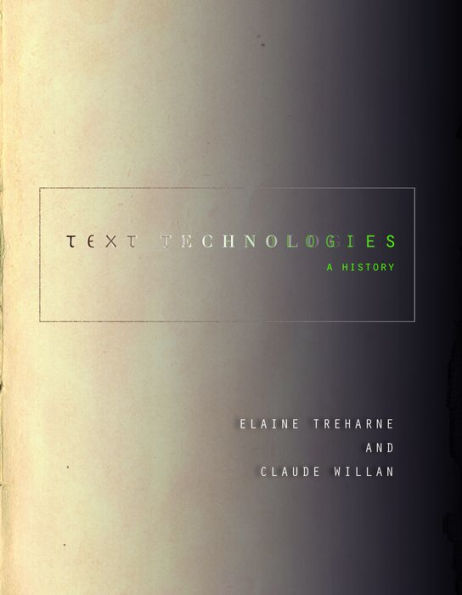This coursebook can be used to support any pedagogical or research activities in text technologies, the history of the book, the history of information, and textually based work in the digital humanities. Through careful explanations of the field, examinations of terminology and themes, and illustrated case studies of diverse texts—from the Cyrus cylinder to the Eagles' "Hotel California"—Elaine Treharne and Claude Willan offer a clear yet nuanced overview of how humans convey meaning. Text Technologies will enable students and teachers to generate multiple lines of inquiry into how communication—its production, form and materiality, and reception—is crucial to any interpretation of culture, history, and society.
This coursebook can be used to support any pedagogical or research activities in text technologies, the history of the book, the history of information, and textually based work in the digital humanities. Through careful explanations of the field, examinations of terminology and themes, and illustrated case studies of diverse texts—from the Cyrus cylinder to the Eagles' "Hotel California"—Elaine Treharne and Claude Willan offer a clear yet nuanced overview of how humans convey meaning. Text Technologies will enable students and teachers to generate multiple lines of inquiry into how communication—its production, form and materiality, and reception—is crucial to any interpretation of culture, history, and society.

Text Technologies: A History
222
Text Technologies: A History
222
Product Details
| ISBN-13: | 9781503600485 |
|---|---|
| Publisher: | Stanford University Press |
| Publication date: | 11/26/2019 |
| Series: | Stanford Text Technologies |
| Pages: | 222 |
| Product dimensions: | 7.50(w) x 9.25(h) x (d) |
